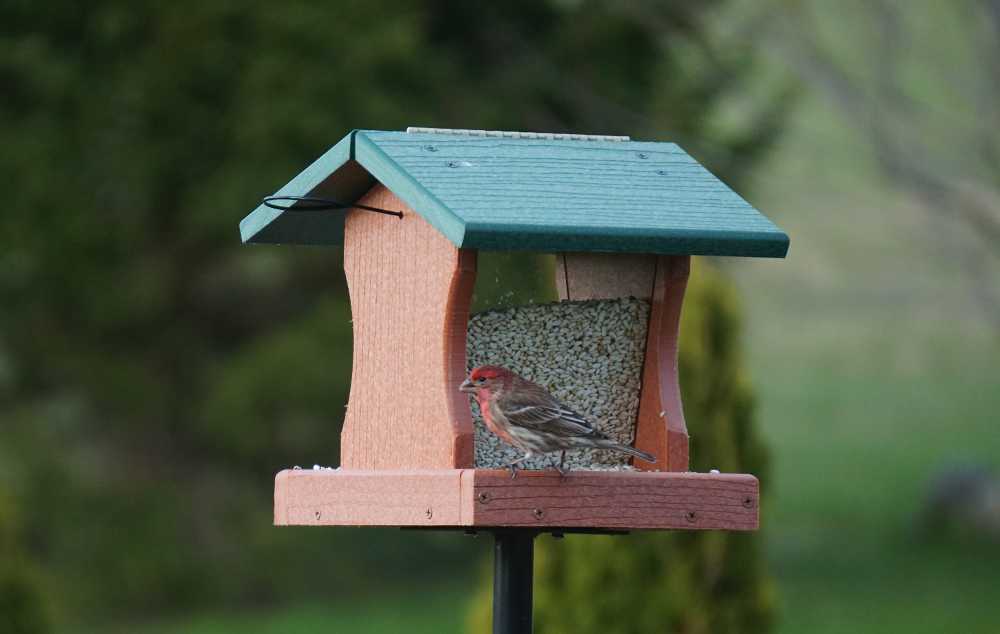Putting up a new feeder in your backyard is one of the best ways to attract new species to your yard. While there’s a lot of joy in birdwatching, having a feeder go untouched can be frustrating.
In this article, I reveal 15 certified ways to get birds to your new feeder faster and easier.
I’ve been attracting birds to my yard since 1999. I’ve implemented all 15 of these strategies and can tell you when I hang a new feeder the birds arrive within days.
Depending on your yard and the natural habitat it offers birds, it may take a while for birds to notice a new feeder. Apply one or more of these tips to speed up the process:
- Understand local species
- Select the right feeder
- Choose the best location
- Understand timing
- Offer different foods
- Put out treats
- Keep food fresh
- Introduce native plants
- Provide water
- Add more perches
- Clean regularly
- Plan for changing seasons
- Install pest-resistant features
- Prioritize safety
- Make sure your feeder has enough capacity/feeding ports
Let’s explore these 15 tips in greater detail! Implementing one or more of these strategies will draw birds to your new feeder in no time!
1. Understand Local Bird Species
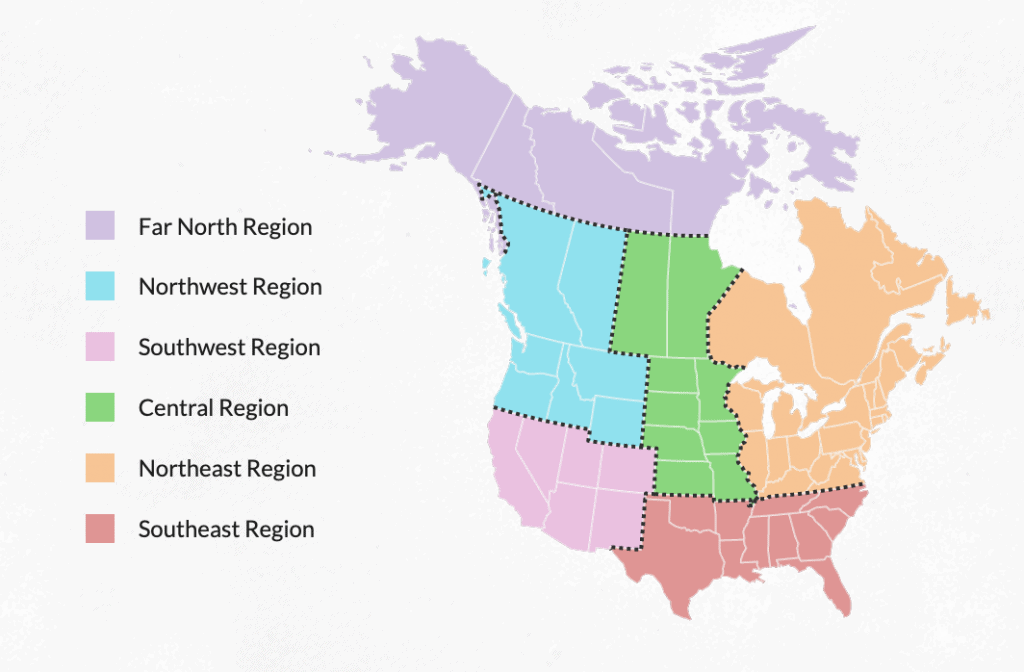
It will be harder to bring birds to a feeder if you don’t know which birds you’re looking for. Spend some time researching what birds you can expect to see based on your location. Common Backyard Birds is a great place to start.
In Wisconsin, I can expect to see northern cardinals, eastern bluebirds, blue jays, a variety of finches, and downy woodpeckers. Just to name a few.
From there, consider how to attract the particular bird species you’re most interested in. If you want to attract cardinals, be sure to put out food they enjoy like sunflower and safflower seeds, and make sure you’re using a compatible feeder. To attract orioles, offer fruit and understand what time of year they’re in your area.
2. Select the Right Bird Feeder
Different birds will respond to different bird feeders. If your feeders aren’t getting much attention, they may not be suited to the species you want to see.
Platform feeders are great for attracting all kinds of birds, and they’re super easy to use! Not only do they accommodate any size backyard bird, but they also can carry any type of food.
I use the Woodlink Going Green Platform Feeder. The video below shows this feeder in action in my backyard.
If you mainly want to attract smaller birds, you can get caged feeders that keep large species away from the food.
For specific species, make sure you’re using a feeder compatible with their favorite foods! Finches love thistle seed so be sure you’re using a thistle feeder to attract them.
Woodpeckers are big fans of suet, so consider using a suet feeder to bring them in.
Finally, if squirrels are eating up your food before birds can get at it, consider a squirrel-proof feeder as well!
3. Choose the Optimal Location for Visibility
What good is a feeder if the birds can’t even see it?
Make sure to place your feeder in a location that’s visible enough for birds to spot. Birds are less likely to notice a feeder tucked in a shady corner than one out in the open.
When placing feeders, make sure they’re in the right spots to avoid them hitting the windows. Either place the feeder within 3 feet of a window or more than 30 feet away. Closer is better if you want to enjoy the view from inside your house!
Birds are creatures of habit, so don’t move your feeders around too often.
If you’re trying to avoid squirrels, locate the feeders away from ut your feeders away from these pests. A bird feeder pole with a baffle can work for this, especially with added squirrel-proofing measures!
4. Recognize the Significance of Timing
Bird feeders are largely seasonal. Understand that birds will use feeders much more in winter when food is scarce. If birds are ignoring your feeders in the summer, they’re probably getting plenty of natural food in the wild!
Also, you need to accept that it takes a while for birds to discover a feeder. Some people get lucky and see birds within a few days. But, don’t get discouraged if it takes a couple of weeks or even months!
Once you are getting birds, remember to refill your feeders around the same time every day. This will help birds routinely visit your yard. If they come a few times and find an empty feeder, they may stop coming entirely!
5. Offer a Diverse Menu
Just like how feeders aren’t one size fits all, there are many options when it comes to bird feed.
Small birds like finches love thistle seeds, but they will likely get ignored by bigger birds.
Cardinals love safflower seeds, but smaller birds like house sparrows do not (win-win!).
While fruit is a favorite of orioles and hummingbirds, certain seedeaters won’t go for it.
By tailoring the food to different species, you can better attract the birds you want to see. The more diverse food you put out, the more likely you are to attract a wide array of species!
6. Introduce Special Treats
Putting out your standard assortment of birdseed is a great start. But, birds might need a little extra motivation to visit your feeder for the first time.
Mealworms are a great choice if you’re looking to attract insectivores. These include wrens, tits, and woodpeckers.
Fresh pieces of fruit are perfect for attracting frugivores. Species like hummingbirds, orioles, and cardinals all love fruit – especially oranges! Some bird feeders even have ways to attach oranges, as shown in the video below!
Peanut butter is an easy alternative to suet. It’s a favorite treat of all kinds of birds from nuthatches to chickadees.
7. Maintain Food Freshness
If you put out food months ago and have left it in your feeder, it’s no wonder birds are avoiding it! While birds will generally avoid wet, moldy seed, it can get them sick if they end up eating it.
Refresh your food every couple of days to ensure it’s always fresh for birds. If you’re not getting much traffic, only put out a little bit of seed at a time to not waste too much.
Store your seed in an airtight container that’s also rodent chew-proof. I use this 6-gallon steel trash can by Behrens.
8. Enhance the Bird Environment with Plants
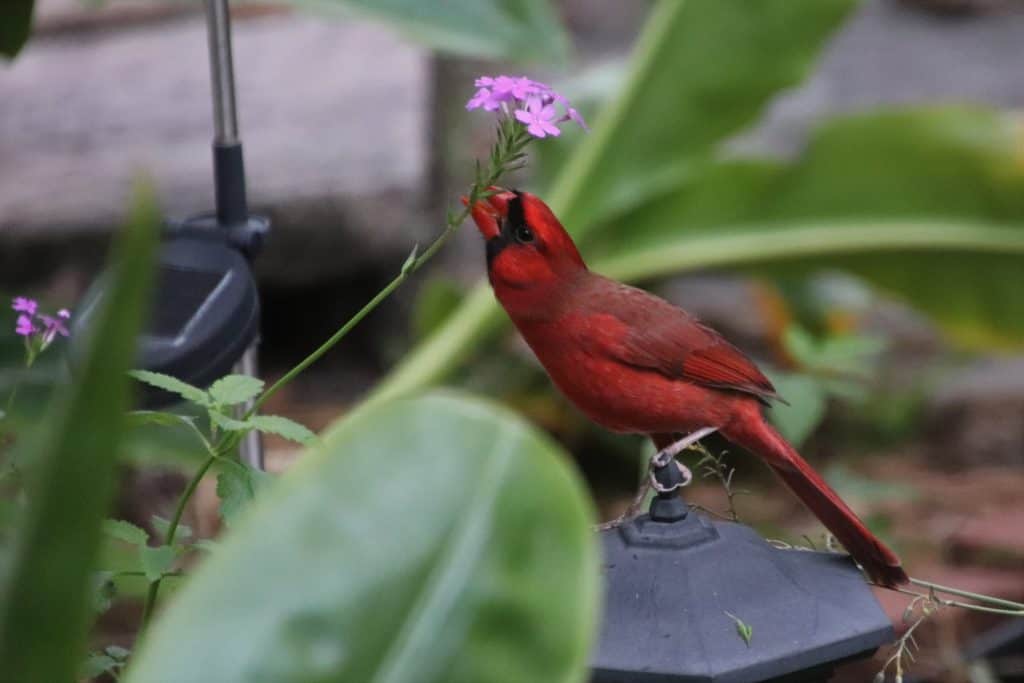
Enhancing your yard with native plants is a great way to make it more bird-friendly. This will then bring more attention to your feeder!
If you’re unsure where to start, Audubon has an amazing Native Plants Database to help with this!
Flowering Plants
These will attract insects during the summer, which will give birds plenty of food. On top of this, they’ll produce a ton of seeds for the birds to enjoy in the fall as well.
Vines
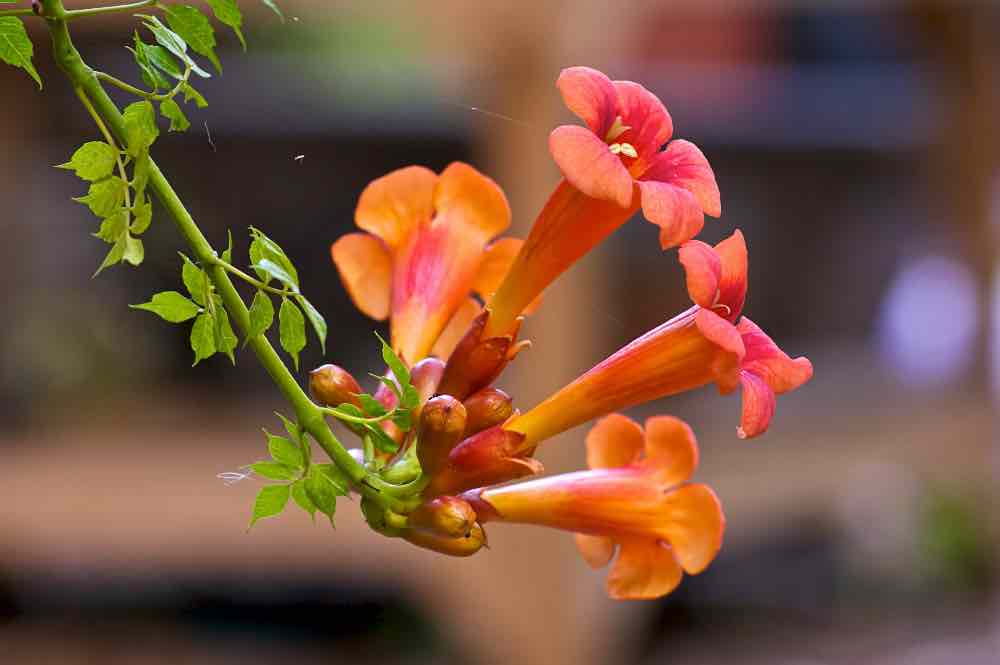
Blooming vines are great for birds like hummingbirds who will drink the nectar out of the flowers. Fruit eaters like orioles will even eat the flowers whole! These will often produce fruit in the fall that’s perfect for birds throughout the winter.
Shrubs
While shrubs will often bear fruit perfect for birds, they also act as a valuable source of cover from potential predators. This makes them ideal for attracting smaller birds to your backyard.
Trees
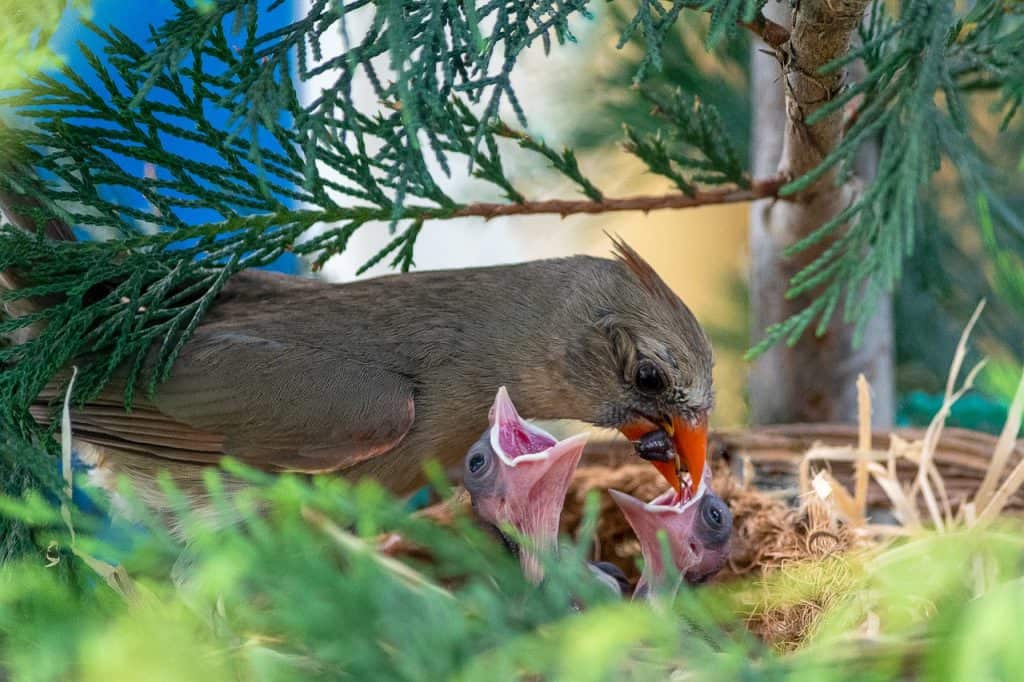
Birds will use trees for practically everything. From nesting and shelter to perching and feeding. Trees also act as a perfect spot to hang up your feeders!
Check out How to Attract Birds Without a Feeder for bird-friendly plant tips.
9. Provide Water Sources
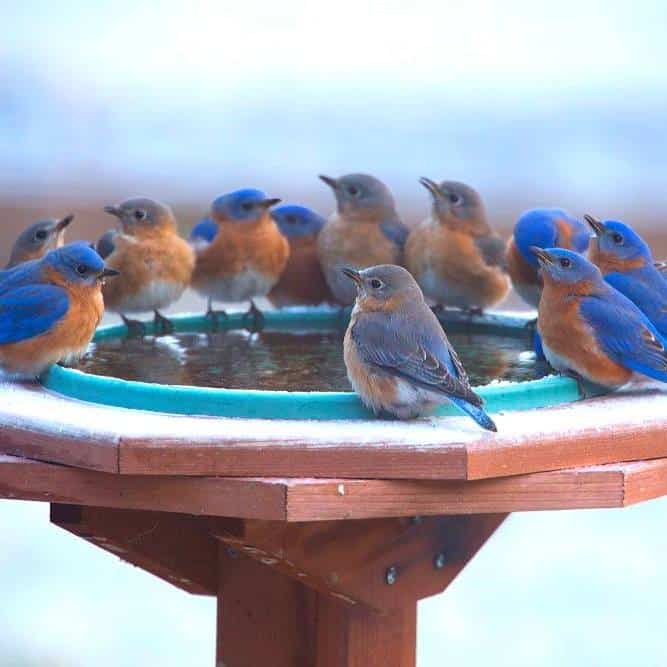
The perfect partner for a bird feeder is a bird bath or water feature! This step is just as important as hanging feeders for making your yard bird-friendly.
A bird bath provides birds with water for both drinking and bathing. This gives birds another reason to visit your yard, making them more likely to notice your feeder.
Heated bird baths are also available to help prevent the water from freezing over in the winter. This is important in the colder months when liquid water is harder to find!
Just like feeders, birdbaths need regular maintenance. Change the water every day or two to make sure it stays clean.
10. Add Staging Perches
A staging birch is any perch close to your feeder. They use these perches to “stage”, and survey the area around the feeder. This allows them to better assess their surroundings until they feel safe using the feeder.
By having a large number of staging perches around your feeder, birds are more likely to use it. These can be tree branches, or artificial perches installed around your yard!
11. Commit to Regular Cleaning and Maintenance
Cleaning your feeders often is necessary to keep them attractive and safe for birds. Dirty feeders are unappealing to birds, and can even get them sick!
I recommend cleaning your feeders every 1-2 weeks. This is especially important when they’re being used regularly.
Platform feeders are likely your best bet here. Simply scrub them off, soak them in diluted bleach for 10 minutes, rinse thoroughly, and you’re good to go!
Consider buying a feeder that’s easy to clean to streamline this process. Feeders made of poly lumber (recycled plastic) are my favorite. They look great and are so easy to clean!
12. Plan for Different Seasons
Having strategies for summer and winter can help with feeder use in both seasons! You’ll likely be getting different species at your feeder, so tailor your strategy to them!
Summer is a great time to experiment with different foods that may not work in the winter. These include jelly, mealworms, and nectar for hummingbirds!
During the winter, most birds will be looking for a mix of seeds, fruit, and suet. Suet is best served in winter as it can quickly go bad in the summer heat.
Also, water is more important in the winter as it’s harder to find when everything’s frozen up so get that heated birdbath up and running.
13. Install Pest-Resistant Features
Remember that point about squirrels?
Birds might not be using your bird feeder because a squirrel is getting to the food before they can. If this is the case, take some squirrel-proofing measures.
Some “squirrel-proof feeders” lock up when a squirrel climbs on them. You can also install “baffles” onto polls. These are usually cones that keep squirrels from climbing up polls.
14. Prioritize Safety and Consider Re-positioning
Even if your feeder is highly visible, it might not be getting much attention because it’s too exposed. Birds want to have some level of coverage in case a predator suddenly appears.
Place your feeders near some shrubbery or cover, to ensure birds can make a quick escape if a predator’s nearby.
As mentioned earlier, place your feeders within 3 feet of windows, or at least 30 feet away, to help avoid window collisions.
15. Ensure Adequate Feeding Ports and Capacity
If a feeder only has a single feeding port, understand it can only handle 1 or 2 birds at a time. This can quickly reduce the amount of birds your feeder will attract.
Consider a platform feeder or a tube feeder with multiple ports. These designs will better support multiple birds at once.
Also, make sure you’re using a feeder that can hold enough seed. Some feeders will run out in a matter of hours with enough traffic, so find one that suits your needs. Platform feeders are ideal for busy backyards because they’re so easy to refill.
Conclusion
If birds aren’t using your feeders – don’t panic! Getting birds to use feeders is just as much about patience as it is strategy.
While you’re waiting for birds to use your feeder, these strategies will help cut the wait time and ensure your efforts are safe for the birds!
Any comments, questions, or concerns? Let me know in the comments below!

